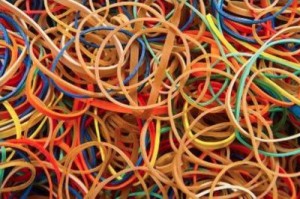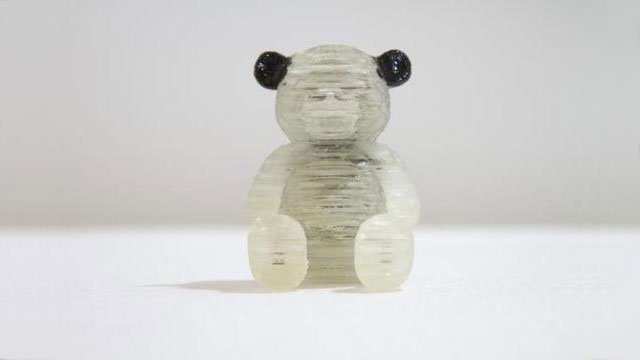MIT researchers have created a new programming language to increase the aptitude of industrial 3D printers to output multiple materials, and multiple properties, within a single print. To demonstrate, they have printed miniature 3DP teddy bears with rare mechanical properties for a 3D print. Expect to see this teddy bear everywhere over the next week given it’s ‘soft power’ appeal…
Kiril Vidimče, MIT PhD student, is the lead author of one of two papers on the topic, further to research by he and his colleagues at the MIT Computer Science and Artificial Intelligence Lab researchers.
Vidimče will be presenting the work today [25.07.2013] at the SIGGRAPH computer graphics conference in Anaheim, California, USA.
The mechanical property in question is elasticity, where an applied force, such as the hug of a child, creates self-reversible deformation of the material—eg. a dent which returns to it’s flat state with no further application of external forces. This is something relatively uncommon in most manufactured plastics, where the eponymous material quality of plasticity dominates owing to the nature of the chemical structure of hydrocarbons. Plastics are derived from hydrocarbons (such as economically-good-but-ecologically-bad oil) with almost complete ubiquity: although exceptions are becoming more common, such as home 3D printing fan’s favourite, PolyLactic Acid (PLA).

Extrapolatory logic suggests that today’s announcement will have ramifications for many additive processes, and filter down by replication or imitation to open-source FFF home 3D printing—how long until we see code appearing on GitHub that actualizes similar results?
For the home-hobbyist reader: encouraging results addressing mechanical properties were observable recently in the release of BendLay, a material by the genius behind the first home 3DP wood Laywoo-D3, in the form of flexibility; and the optical material property of transparency.
For the reader deeply interested in material properties, a very interesting report on improving the material properties of PLA can be found, with a free excerpt, at ScienceDirect, here.
About CSAIL:
CSAIL research is focused on developing the architectures and infrastructures of tomorrow’s information technology, and on creating innovations that will yield long-term improvements in how people live and work. Lab members conduct research in almost all aspects of computer science, including artificial intelligence, the theory of computation, systems, machine learning, computer graphics, as well as exploring revolutionary new computational methods for advancing healthcare, manufacturing, energy and human productivity.
Source: Boston.com




